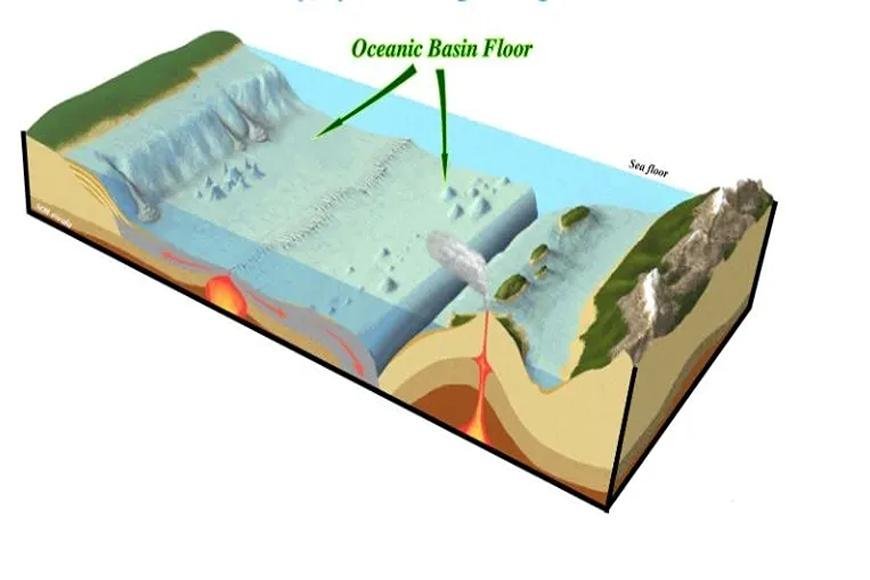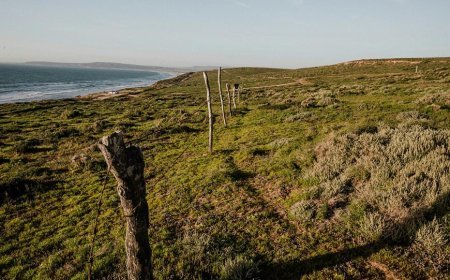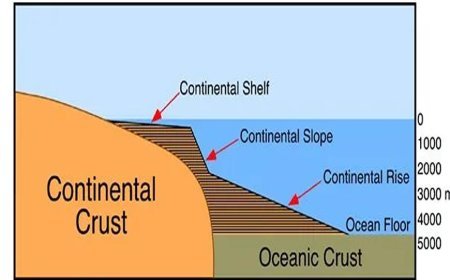CHARACTERSTICS AND ORIGIN OF OCEANIC BASIN
Oceanic basins are vast, saucer-shaped depressions that comprise over 70% of Earth's surface. These submerged landscapes hold a unique set of characteristics and a fascinating story of their origin.

CHARACTERSTICS AND ORIGIN OF OCEANIC BASIN
- The principal distinguishing features of relief are ocean basins and continents.
- Rifting and spitting of the continental crust in the earth's lithosphere are the processes that contribute to the development of ocean basins as magma and mantle materials come to the planet's surface.
- There are five major ocean basins that may be identified: the Atlantic, Southern, Arctic, Pacific, and Indian ocean basins.
- The Atlantic Ocean has the most simple age pattern for its ocean bottom when compared to the other ocean basins.
- When it comes to this, the Pacific Ocean is the largest, accounting for 30% of the Earth's total surface area.
- "Asia, Europe, Antarctica, Australia, South America, North America, and Africa" are the earth's seven primary continents.
- Australia is the smallest of the seven continents that comprise the Earth, with Asia being the largest.
The formation of ocean basins and continents
- The ocean basins and continents are the Earth's fundamental relief features, and they are also considered first-order relief features.
- Endogenic forces are primarily responsible for the massive lithospheric plate movements that occur in the Earth's crust.
- Plate movements are the fundamental source of continent and ocean development. According to Wegner's observations, the bulk of the continents are parts of Pangea, the previously stated supercontinent.
- Individual continents originated as a result of Pangea's progressive fragmentation into smaller shards that migrated throughout the current position to finally form the continents.
- The offset oceanic ridge's axis features transformation faults as a result of the generation of lateral displacement.
- The existence of rifts and ridges can be used to identify the movement of the lithospheric plate.
Stages of Ocean Basin Formation
- The early processes that resulted in the development of ocean basins were the splitting, rifting, and stretching of the continental crust.
- The ascent of magma and mantle materials within the crack is a step in the process of generating new oceanic lithosphere. The evolution of the ocean basin involves six processes in total.
Development of Embryos
- This is the initial stage in which rift valleys arise as a result of the continents separating apart. Such a process, for example, was responsible for the development of Eastern Africa and the Great Rift Valley.
Juvenile
- Juvenile basalts seen on the seafloor originate at this stage as a consequence of continental component separation. The formation of the Red Sea is the result of this process.
Mature
- Subducts arise at this stage as a result of the expansion of massive ocean basins and the construction of the trench. As a result of this occurrence, the Atlantic Ocean was formed.
Declining
- The subducts on the oceanic ridge and seabed gradually vanished, resulting in the development of the Pacific Ocean.
Terminal
- The Persian Gulf, a confined ocean basin, formed as a result of sedimentation in young mountain ranges and sides.
Suturing
- During this stage, a continental collision occurs, resulting in the uplift of areas and the construction of towering mountain bands.
- Both the Tibetan Plateau and the Himalayas are the product of this process, which is also responsible for their formation.
What's Your Reaction?


































